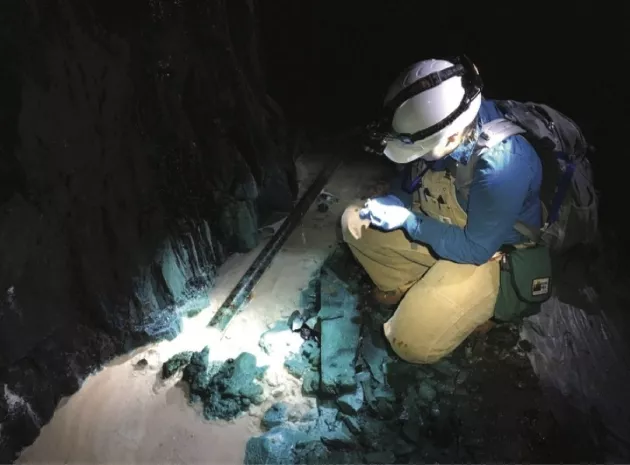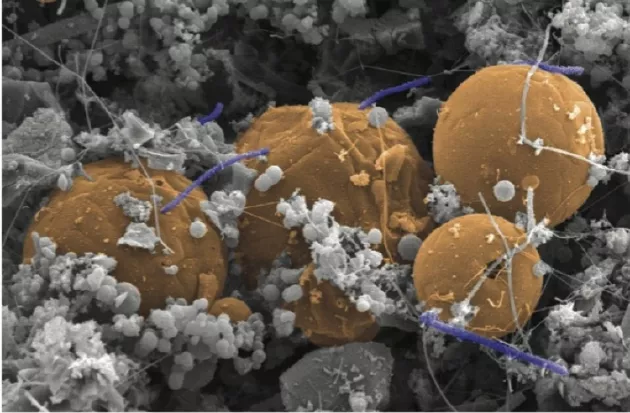On May 10, Beijing time, according to foreign media reports, life on earth appeared at least 3.5 billion years ago, but the specific place of origin has always been an unsolved mystery** Traditional science has long believed that life may have originated in warm freshwater ponds or undersea hot springs. But 30 years ago, the scholar Thomas Gold proposed another theory that life may have originated deeper on earth.

Gold is a professor of astronomy at Cornell University and has a strong interest in biophysics and geophysics. In a paper, he proposed the concept of "thermal biosphere deep in the earth", suggesting that the original place of origin of life may be several kilometers below the earth's surface. In his book "underground" published in 2019, writer will hunt summarized golde's basic ideas as follows:
"Four billion years ago, the earth's surface was like a battlefield. It was surrounded by lava from volcanic eruptions. The ground was scorched by strong ultraviolet rays and often bombed by asteroids. The initial response of life was so fragile that it could not happen in such a turbulent environment. The environment below the earth's surface was very stable, free from the weather, strong light and violent earthquakes."
Gold believes that the warm underground environment, together with the nutrients in rocks and groundwater, provide ideal growth conditions for newborn microorganisms. Over the next millions of years, some microorganisms gradually moved upward and finally sowed the seeds of life on the earth's surface.
The concept of "thermal biosphere in the depths of the earth" is controversial. Moreover, gold also proposed that oil and natural gas existed in the earth's crust when the earth was formed, rather than formed by buried and fossilized animal and plant materials. He himself admitted that this idea is indeed contrary to the mainstream view.
"If it were a different era, I would be bound to the stake and burned to death." Gold joked.

Fortunately, scientists have taken a more civilized approach to gold's Theory - to carry out more "in-depth" exploration and research into the depths of the earth. Although most of these studies deny gold's theory of oil and gas, a large number of life relics have been found deep underground.
"Now there is a lot of evidence that the biosphere deep underground is almost everywhere on earth, both on land and in the marine environment." According to a paper published in the proceedings of the National Academy of Sciences in 2017.
Scientists have found that the maximum depth of microorganisms has reached 2.8 kilometers underground. These microbes "feed" on a range of minerals and live at a much slower pace than terrestrial organisms. Some microorganisms are quite different from those on the surface, so they get the nickname of "endobiotics" (relative to extraterrestrial organisms). Crucially, gold has boldly suggested that microbes deep underground may have originated from other distant planets. In view of this, scientists did find a microorganism that seems to be completely unrelated to the earth's surface, called "Goldmine fungus" (Latin name Candidatus desulforudis audaxviator). They were found deep underground in a gold mine in South Africa and can survive at 60 ℃ without organic compounds, light and oxygen.
Scientists also plan to dig deeper to find more "inner space creatures". At the holmsteck mine in South Dakota, they have begun to dig 2.5km underground and plan to dig down to the location with an ambient temperature of 120 ℃.
From the perspective of astrobiology, the concept of "deep underground thermal biosphere" is also attractive. As gold wrote:
"Underground life may be widely distributed on the major planets of the solar system, because the underground environment of many planets is more livable, but the surface environment is extremely bad. We can even guess that such life forms exist widely in the whole universe. After all, planetary objects with similar underground environment may not be rare, whether in the form of independent objects or similar to the solar system."
If we look at the universe with this positive attitude, perhaps the seeds of life have been sown on many planets. Once the environment on the surface of a planet reaches the optimal state, life will gush out from the ground and develop countless rich and wonderful life forms. (leaves)